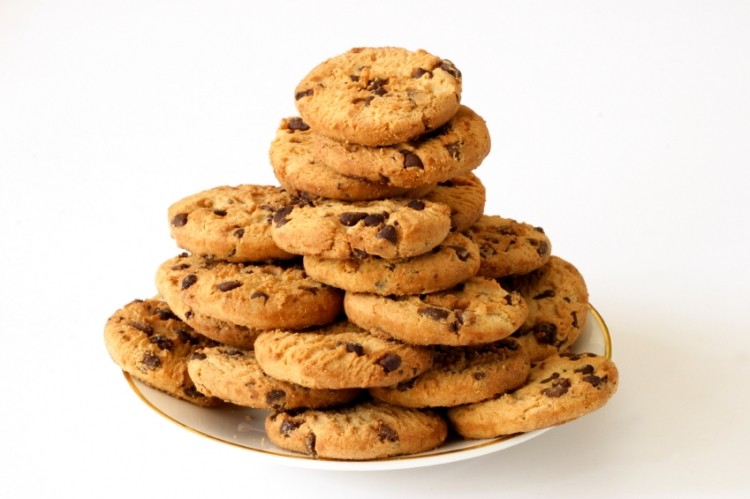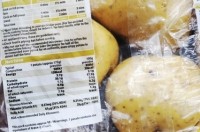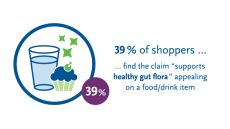Food labelling dismissed as ‘marketing tool’ to skew nutritional data: Study

The findings are of relevance to public policy and reveal that when nutrition amounts were presented favourably on the label, sales increased for healthy products with smaller recommended serving sizes.
The practice calls into question how close food marketers are sailing to the wind in terms of their voluntary participation in producing front-of-pack nutrition labels.
The researchers believe this provides a degree of freedom as to how disclosed information is presented.
Previous research has suggested that consumers can misinterpret such nutrition information and therefore draw biased conclusions as to how healthy a product is.
While unintended consequences of nutrition labelling on nutrition quality of food products have been investigated, a more thorough investigation on detrimental consumer response to nutrition disclosure is missing.
Healthy vs. harmful

Leader of the study, Dr Ossama Elshiewy from the Department of Business Administration at University of Goettingen, Germany, used data that contained purchase details of yogurt and cookies from a retailer.
These purchases covered two years (one year before and one year after the voluntary label introduction) and included more than 1,500 different stores across the United Kingdom.
In addition to a unique product code (UPC), the shopping date, quantity in units, and price were included. The data also contains described the unit size and nutrition information disclosed on the label for the UPCs.
With this information, this sales volume, price, competitor price, serving-size specification, and calories per 100 g for each UPC in the purchase transactions, could be measured.
In addition, from the nutrition information disclosed on the label, measures of the serving-size specification and calories per 100 g for each UPC were created.
The team’s results supported Elshiewy’s prediction that a lower serving-size specification increased sales volume after label introduction in healthier categories.
The results also suggested that reducing the serving-size specification across the range of yogurt products increases sales volume by 90 kg in the weeks after label introduction.
Predictive models also suggested that reducing the serving-size specification, for example, by 50% increased sales volume by an average of 4% in the yoghurt category.
“Notably, the effect held after controlling for a number of additional influences, such as price, competitor price, time-dependence, objective healthiness, as well as different types of unobserved heterogeneity,” said the study.
“The findings reveal that consumers may be misled by the nutrition label information.”
The findings match those of a previous study that also took place in a ‘real world’ setting that noticed consumers purchased more when the serving-size specification was particularly small.
Indulgent food effect

The other finding of note was the prevalence of this effect in healthier product categories. Sales volume did not change significantly in the cookies category but did for the yoghurt category.
The researchers believed this effect was down to consumer behaviour as less attention is paid to nutrition labels when consumers chose indulgent food, where consumers are known to be less susceptible to reduced serving-size specifications.
They also theorised that consumers may have paid attention to the nutrition information, but reacted differently than in the healthier yoghurt category.
“When cookies are consumed for indulgence, where consumers seek taste rather than healthiness, cookies with more unhealthy nutrients are preferred,” the authors noted, referring to two studies as additional evidence. (1,2)
“This conjecture is supported by the near significant positive effect of unhealthier purchases in terms of calories per 100 g after label introduction. We emphasise that these aspects deserve attention in future research.”
The researchers concluded the study by recommending a series of binding rules that prevent overeating encouraged by lower recommended serving sizes on nutrition labels.
Here, standardisation for serving-size specifications on (voluntary) nutrition labels to increase the comparability of food products would be mandatory and enforced.
A current example is the UK’s Food Standards Authority’s (FSA) traffic-light-signpost label, which specifies nutrition amounts on a 100-g basis and provides colour coding in green, amber, or red to indicate low, medium, and high values according to standardised thresholds.
Source: Journal of the Association for Consumer Research 2016; 1(1), 104-114.
Published online ahead of print, DOI: 10.1086/684286
“Seduced by the Label: How the Recommended Serving Size on Nutrition Labels Affects Food Sales.”
Authors: Elshiewy, Ossama, Steffen Jahn, and Yasemin Boztug






















